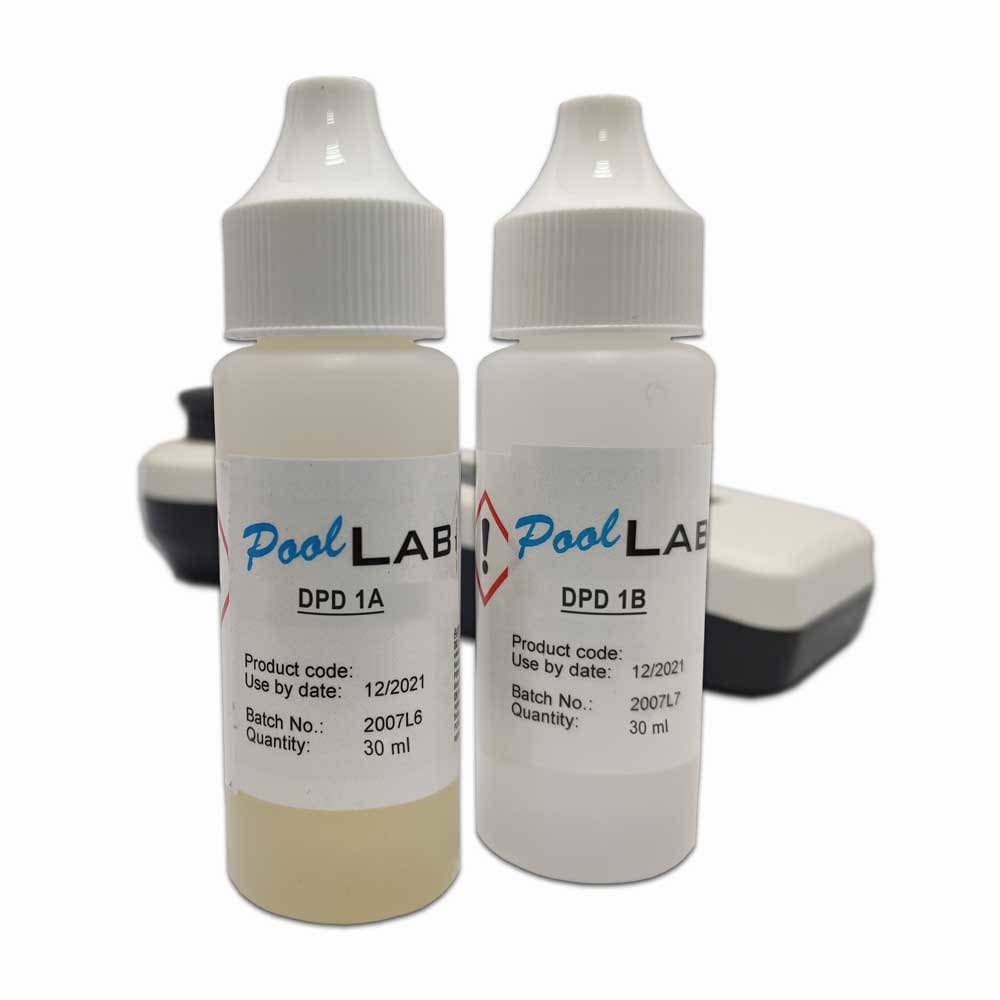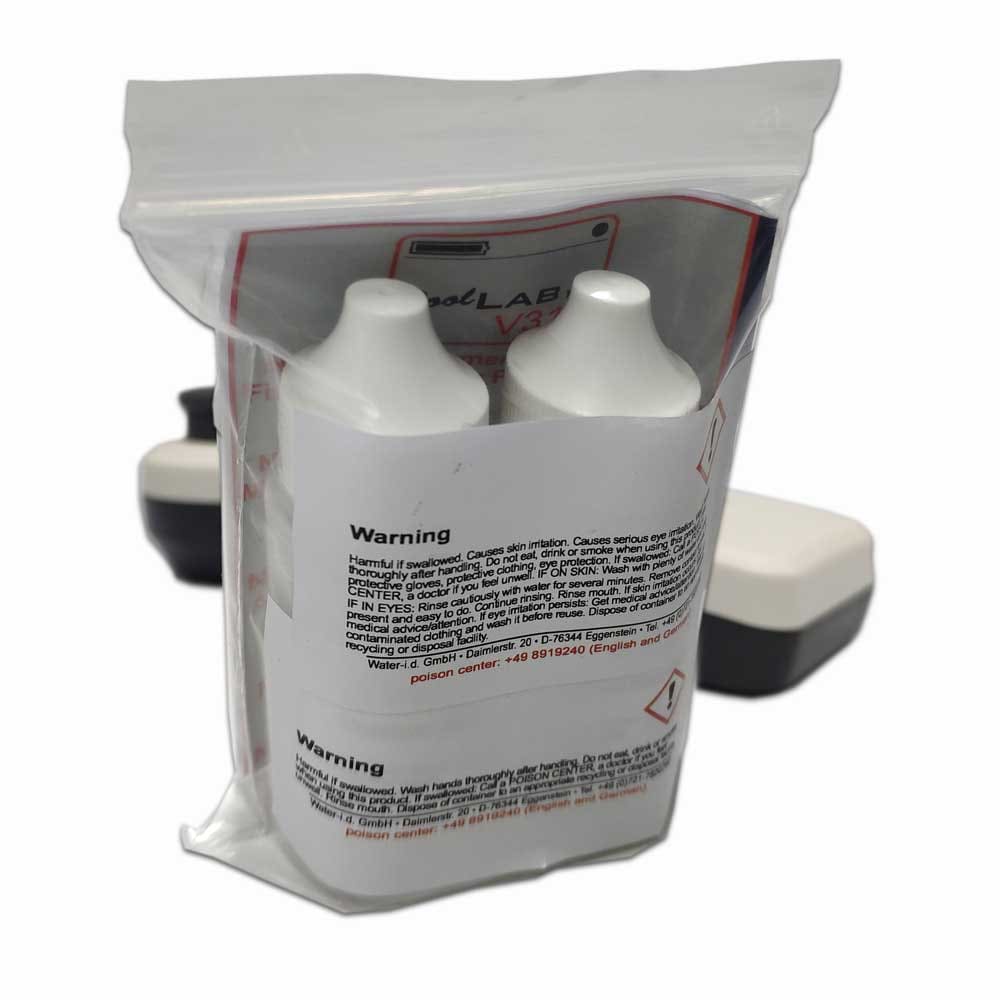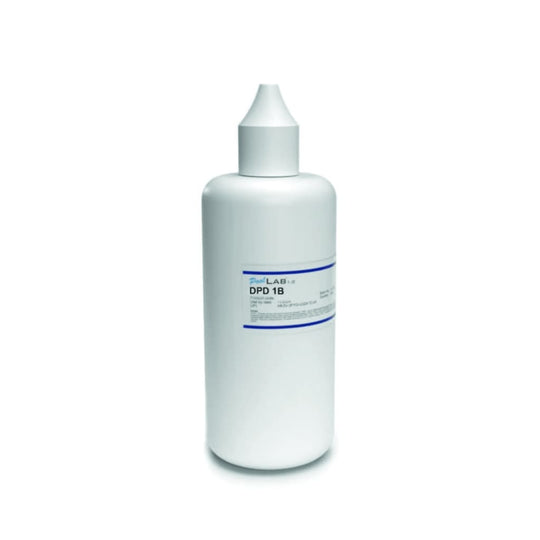DPD 1A + DPD 1B Liquid Reagents – for Testing Free Chlorine (250 Tests) for Poollab 1.0, 2.0 & PoolWaterLAB
- Developed in Germany for the US market
- Free return within 30 days
- Item is located in the USA and ships from the USA. Orders ship within 24 hours. Free shipping on orders over $100. To find out the cost of worldwide shipping, simply add items to your cart and enter your shipping details — the rate will be calculated automatically.
- In stock, ready to ship
- Backordered, shipping soon
( PL65DPD1A + PL65DPD1B )
Chlorine Free | 0.0 - 4.0 mg/l (ppm) | reagent for measurements - DPD 1A + DPD 1B. The shelf life of liquid reagents is 6 months.
Keep containers tightly closed in a dry, cool and well-ventilated place. Protect frommoisture. Store locked up. Keep out of the reach of children. Store away fromother materials.
Chlorine (in the form of sodium hypochlorite, calcium hypochlorite, chlorine gas, chlorinated isocyanurates,...) has become the leading disinfectant for swimming and bathing pool water worldwide. When measuring the chlorine concentration present in the water, a distinction is made between 3 partial values according to DIN EN 7393. 1 Free chlorine: Chlorine present as hypochlorous acid, hypochlorite ion or as dissolved elemental chlorine. 2. Combined chlorine: Proportion of total chlorine present in the form of chloramines and all chlorinated derivatives of organic nitrogen compounds. 3. Total chlorine: Sum of the former two forms. While free chlorine is immediately available for disinfection action, the disinfection potential of combined chlorine is severely limited. The chloramines are responsible for the typical indoor pool odor and the irritation of human mucous membranes, resulting in reddened eyes. A representative of this class of substances is nitrogen trichloride, which is already perceived by humans at a concentration of 0.02 mg/l. Free chlorine is measured according to the DPD N° 1 method. The indicator chemical N,N-diethyl-p-phenylenediamine sulfate (DPD) is oxidized by the chlorine and turns red. The more intense the discoloration, the more chlorine is present in the water. The chlorine concentration can now be determined by photometric measurement or optical comparison with a color scale. If a DPD N° 3 tablet is now added to this sample, the bound chlorine is also displayed. The measured value therefore now corresponds to the total chlorine concentration. The concentration of combined chlorine corresponds to the difference between total chlorine and free chlorine. Since even the smallest traces of the effective chemical of the DPD N° 3 tablets cause combined chlorine to become effective in the measurement, it is essential to ensure that the measuring device is cleaned extremely carefully before the next DPD N° 1 measurement in order to avoid a measurement error. The use of two different measuring vessels (one generally for the measurement of free and one generally for the measurement of total chlorine values) would be recommended.


















